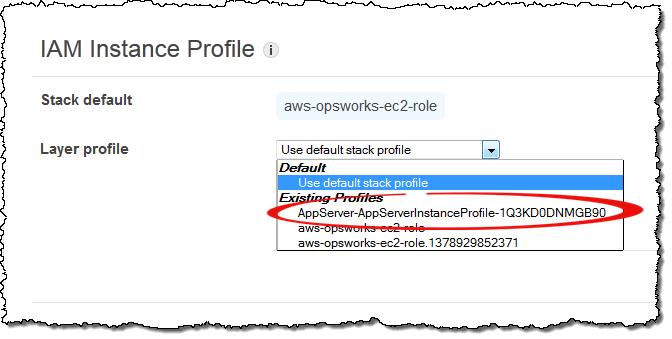Step 2: Create a PHP App Server Stack
Important
The AWS OpsWorks Stacks service reached end of life on May 26, 2024 and has been disabled for both new and existing customers.
We strongly recommend customers migrate their workloads to other solutions as soon as possible. If you have questions about migration, reach out to the AWS Support Team on AWS re:Post
The stack consists of two layers, PHP App Server and MySQL, each with one instance. The application stores photos on an Amazon S3 bucket, but uses the MySQL instance as a back-end data store to hold metadata for each photo.
Content delivered to Amazon S3 buckets might contain customer content. For more information about removing sensitive data, see How Do I Empty an S3 Bucket? or How Do I Delete an S3 Bucket?.
To create the stack
-
Create a new stack—named
PhotoSitefor this example—and add a PHP App Server layer. You can use the default settings for both. For more information, see Create a New Stack and Creating an OpsWorks Layer . -
On the Layers page, for PHP App Server, choose Security and then choose Edit.
-
In the Layer Profile section, select the instance profile name that you recorded earlier, after launching the AppServer AWS CloudFormation stack. It will be something like
AppServer-AppServerInstanceProfile-1Q3KD0DNMGB90. OpsWorks Stacks assigns this profile to all of the layer's Amazon EC2 instances, which grants permission to access your Amazon S3 bucket to applications running on the layer's instances .
-
Add an instance to the PHP App Server layer and start it. For more information on how to add and start instances, see Adding an Instance to a Layer.
-
Add a MySQL layer to the stack, add an instance, and start it. You can use default settings for both the layer and instance. In particular, the MySQL instance doesn't need to access the Amazon S3 bucket, so it can use the standard OpsWorks Stacks instance profile, which is selected by default.